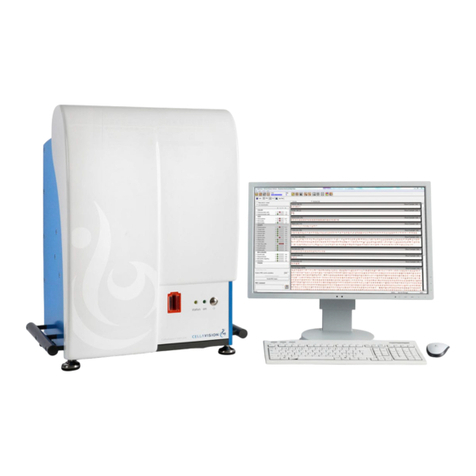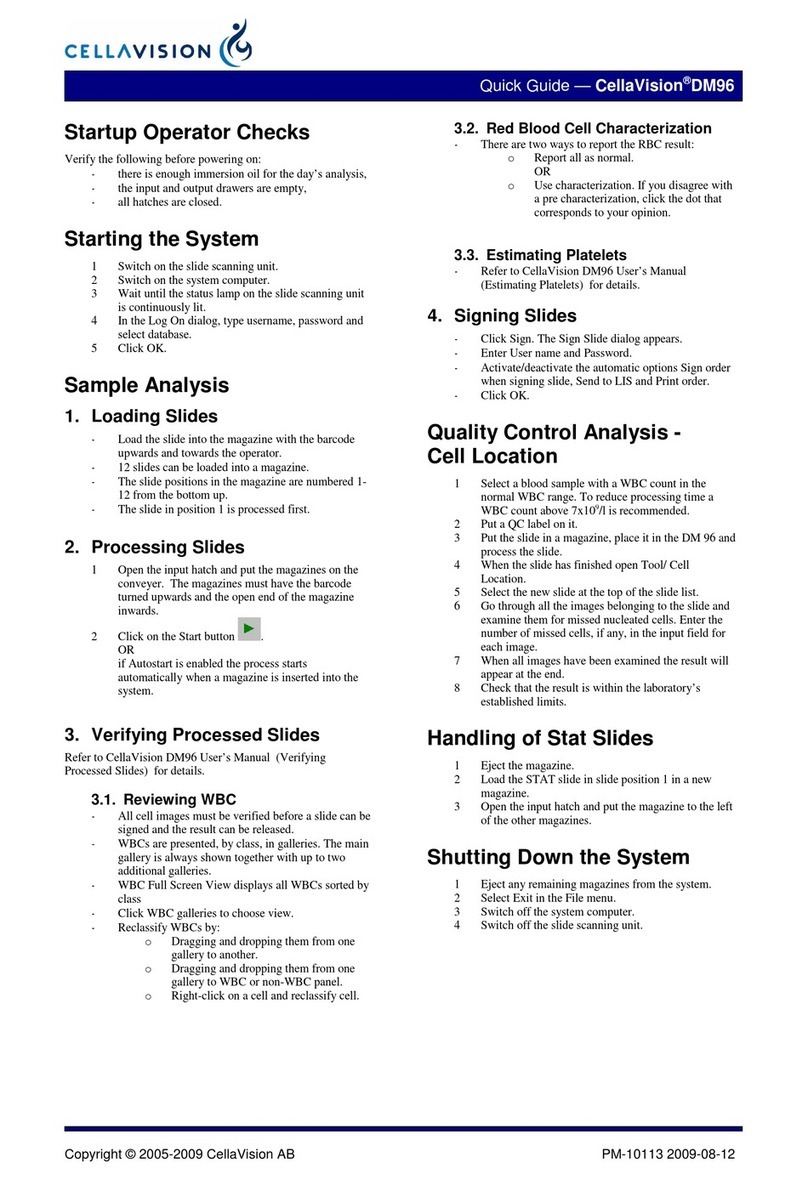
CellaVision®DM1200
7.1.1 Slide requirements ....................................................................................... 77
7.2 Scan overview image.............................................................................................. 77
7.2.1 Overview........................................................................................................ 78
7.2.2 Navigating ..................................................................................................... 79
7.2.3 Tagging regions of interest.......................................................................... 80
7.2.4 Copying regions of interest to disk............................................................. 80
7.2.5 Adding comments ........................................................................................ 80
7.2.6 Order data ..................................................................................................... 81
7.3 Database view ......................................................................................................... 81
7.3.1 Processed orders ......................................................................................... 81
7.3.2 Pending orders ............................................................................................. 81
8 SYSTEM INFORMATION.................................................................................................. 83
9 CUSTOMIZING THE SYSTEM......................................................................................... 84
9.1 Database settings.................................................................................................... 84
9.1.1 Manage databases ...................................................................................... 85
9.1.2 Manage database size ................................................................................ 87
9.1.3 Database compression ............................................................................... 90
9.2 User account settings ............................................................................................. 91
9.2.1 Options for restricted users......................................................................... 93
9.3 Analysis settings...................................................................................................... 93
9.3.1 Default processing settings ........................................................................ 94
9.3.2 RBC precharacterization settings .............................................................. 94
9.3.3 RBC analysis area settings for the Advanced RBC Application............ 98
9.3.4 Reclassification settings.............................................................................. 98
9.3.5 PLT settings................................................................................................... 99
9.3.6 BF analysis settings...................................................................................101
9.3.7 Worklist setting ...........................................................................................103
9.4 Report settings.......................................................................................................103
9.5 Order signing settings...........................................................................................105
9.6 Standard comment settings .................................................................................105
9.7 Reference cells settings .......................................................................................106
9.8 E-mail settings .......................................................................................................107
9.9 Digital slides settings ............................................................................................108
9.10 Language settings...............................................................................................109
10 MAINTENANCE ............................................................................................................. 110
10.1 Weekly maintenance .......................................................................................... 110
10.1.1 Clean objectives and LED table............................................................. 110
10.1.2 Clean hood................................................................................................ 112
10.1.3 Clean bottom tray..................................................................................... 112
10.1.4 Delete unsigned orders........................................................................... 113
10.1.5 Restart system computer........................................................................ 113
10.2 Preventive maintenance..................................................................................... 113
iv PM-10829-01 2015-07-10 User’s Manual





























